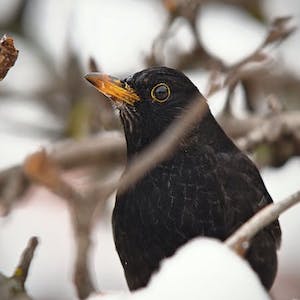The European laurel Laurus nobilis berries in the diet of the blackbird Turdus merula

All claims expressed in this article are solely those of the authors and do not necessarily represent those of their affiliated organizations, or those of the publisher, the editors and the reviewers. Any product that may be evaluated in this article or claim that may be made by its manufacturer is not guaranteed or endorsed by the publisher.
Accepted: 3 June 2023
Authors
The feeding activity of frugivorous birds is influenced by the selection criteria for berry size. European laurel (Laurus nobilis), a dioecious species with high lipid and protein content in its berries, is dispersed by blackbird (Turdus merula). This study aimed to investigate the relationship between berry size and feeding behavior of blackbird. Field data was collected in a botanical park near Rome (Italy) and included seed collection, observation of regurgitation events, and bird population surveys. The volume and shape index of berries and seeds were measured, and statistical analyses were performed. The results showed a positive linear correlation between berry and seed volume. Blackbird selectively consumed larger berries, resulting in a higher percentage of pericarp as an energy resource. The birds exhibited a bimodal strategy, feeding on both large ellipsoidal and large round berries, which had a higher percentage of pericarp. The shape index of berries and seeds showed a significant difference between the control collection and those consumed by blackbird. The findings suggest a case of coevolution, with the plant optimizing seed dispersal by offering berries of different sizes to accommodate the feeding behavior of blackbird. This study provides insights into the ecological relationship between frugivorous birds and plants, highlighting the role of berry size in seed dispersal strategies.
How to Cite

This work is licensed under a Creative Commons Attribution-NonCommercial 4.0 International License.







